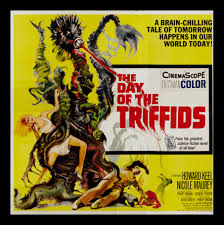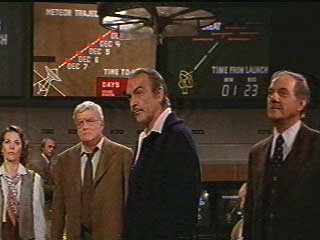
Posted on 06/19/2010 5:29:44 PM PDT by TaraP
NASA is assessing the risk to spacecraft posed by the upcoming 2011 Draconid meteor shower, a seven-hour storm of tiny space rocks that has the potential to ding major Earth-orbiting spacecraft like the crewed International Space Station and Hubble Space Telescope.
The meteor shower risk assessment is actually more art than science, and there has been some variation in the projected intensity levels of the 2011 Draconids by meteoroid forecasters. But spacecraft operators are already being notified to weigh defensive steps.
Current meteor forecast models project a strong Draconid outburst, possibly a full-blown storm, on Oct. 8, 2011, according to William Cooke of the Meteoroid Environment Office at NASA's Marshall Space Flight Center in Huntsville, Ala.
The Draconids do present some risk to spacecraft, Cooke confirmed. They could potentially become the next significant event in low-Earth orbit as far as meteoroids are concerned, he added.
Cooke and Danielle Moser of Stanley, Inc., also of Huntsville, presented their Draconid data at Meteoroids 2010 - an international conference on minor bodies in the solar system held May 24-28 in Breckenridge, Colo. The conference was sponsored in part by NorthWest Research Associates/CoRADivision, NASA, Los Alamos National Laboratory and the Office of Naval Research.
Less flashy, but risk exists
The yearly Draconids are not known for their bright meteor displays, Cooke said.
Predicted intensity rates for 2011 span an order of magnitude, he added, with maximum Zenithal Hourly Rate, or ZHR, ranging from a few tens to several hundred as viewed by a single observer.
A Marshall Space Flight Center Meteoroid Stream Model based on radar and optical observations of past Draconid showers suggests that the maximum rate will be several hundreds per hour.
So why the worry?
Cooke said that a significant fraction of spacecraft anomalies produced by shower meteoroids are caused by electrostatic discharges when meteoroid meets satellite.
And while no spacecraft electrical problems were reported during the strong Draconid outbursts of 1985 and 1998, he said that the lack of past anomalies should not be taken as carte blanche for satellite operators to ignore in 2011.
The chance of electrical anomalies is low, however, due to the Draconids slow speed, Cooke pointed out.
"We're already working with NASA programs to deal with spacecraft risk," Cooke said. "I imagine when the word gets out there will be a Draconid outburst, I'll get the usual calls from comsat companies as well as government space programs," he told SPACE.com.
Out on the limb
The International Space Station is heavily armored against orbital debris.
That being the case, "we don't expect anything to go wrong there," Cooke said.
However, the Draconids will appear above the Earth's limb making it a spectacular looking out-the-windows celestial show for the space station crew.
"I have no concerns about the space station. Even if the Draconids were a full-scale meteor storm I would be confident that the space station program would take the right steps to mitigate the risk," Cooke said.
The most radical step would be to reorient the space station, Cooke said.
"But frankly, given the flux levels, I don't think they are going to have to do that," he added. "But that's their call. I'll give then the flux levels and they'll make the decision."
One measure that space station officials could take, he added, is not to perform spacewalks during the shower.
For the Hubble Space Telescope, if its operators deem the risk high enough, they will point the observatory away from the Draconid radiant – the point from which the shower appears to emanate.
"Any time you take a mitigation strategy, like changing a spacecraft's attitude or turning off high-voltage, that incurs risk as well," Cooke said.
Caution is key
Each spacecraft is unique, and components have differing damage thresholds, so programs are encouraged to conduct analyses to determine whether or not mitigation strategies are necessary for their vehicles ahead of next year's Draconids.
Cooke said that the spacecraft threat from meteor showers in the past – particularly the 1998 Leonids – produced more hype than hypervelocity impacts.
"We really didn't understand what was going on," he added. "Now we have a much better feel. But the Leonids did sensitize spacecraft operators to worry about meteor showers. Perhaps, sometimes, they worry more than they should."
In early 2011, Cooke said that he'll be revising his Draconid prediction – also making use of data from other forecasters around the globe – which will be released to spacecraft operators.
"There's also an awful lot of windage in there too," Cooke added. "We're like the weather reporters...our forecast changes...and the general trend is always downward," Cooke said.
Still, caution is the watchword.
"Because we can now forecast them, we have a way of putting it. If you are hit by a sporadic [meteor], it's an act of God. If you are hit by a shower meteoroid, it's an act of negligence," Cooke said.
Like passing out Bibles and providing legal aid for last will and testaments, I assume.
What else are they going to do? That's a big honking target and the aluminum on a beer can is thicker.
I suppose they could present it ass-on toward the shower and reduce the cross section, but gathering everyone at the far end for a prayer meeting seems just as effective.
/johnny
I like the Perseids too. But the last 3 years it has been overcast.

Are Muslims going to be safe????
I hope the ISS has a jumbo can of Fix-A-Flat on board.

I blame the Daleks
Disclaimer: Opinions posted on Free Republic are those of the individual posters and do not necessarily represent the opinion of Free Republic or its management. All materials posted herein are protected by copyright law and the exemption for fair use of copyrighted works.